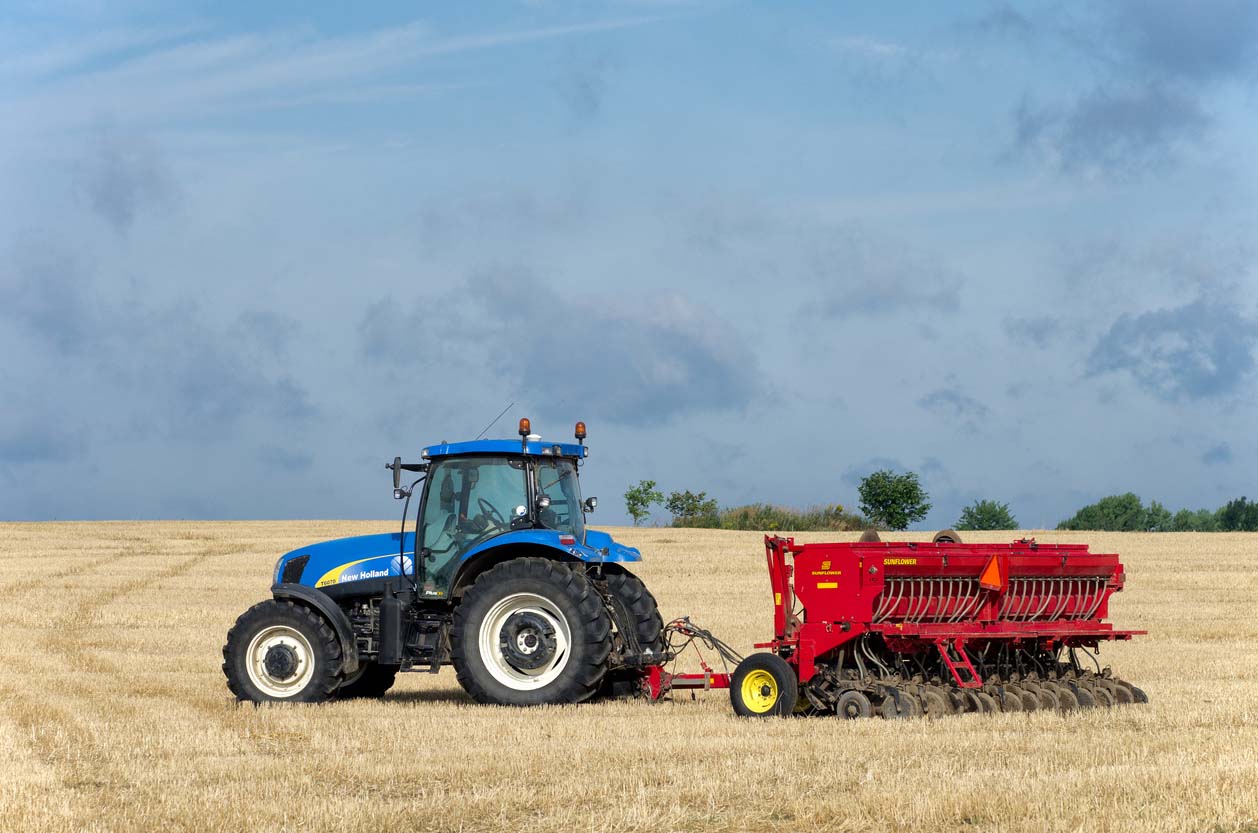Crimping Cover Crops
Crop roller “crimping” has become a common way to mechanically terminate cover crops. Crimpers are used to kill grass cover crops (cereal rye, barley, wheat, sorghum, Sudan, pearl millet), vetches (hairy and common), annual clovers (crimson and balansa), buckwheat, and multi-species cover crops. Crimpers do not work well with perennial cover crops like red clover, alfalfa, or annual ryegrass as a cover crop. The best results occur on annual cover crops when the heads or flowers are in the “boot” or head stage, near the end of the plant growth cycle.
Crimpers are 16-inch rolling steel drums with blunt steel blades either tractor pulled or front mounted. As the crimper rolls through a cover crop, the blunt blade “crimps” or injures plant stems every 7 inches. The blades are usually curved or positioned in a “chevron” pattern at a 7- 100 angle to reduce bouncing, soil movement, and to increase maximum plant stem crimping pressure. If done properly, a 90-100% kill is possible without using herbicides. Organic farmers use crimpers without any herbicides while conventional farmers use it in combination with herbicides to reduce herbicide resistance, especially with glyphosate. Farmers often have to spray once after crimping but it may eliminate or reduce one spray pass.
The advantages of crimpers are they kill cover crops mechanically, suppress weeds by forming a mulch, decrease hot summer soil temperatures, conserve soil moisture, decreases soil erosion, and add organic matter. Crimping cover crops works well on big seeded row crops like corn and soybeans but does not work on small seeded crops like hay. A disadvantage is that the cover crop has to be crimped at the right stage (boot or head stage) to be effective.
Crimpers or crop rollers are used several ways. A crimper can be front mounted on the tractor, front of the planter, trailing the planter, or as a separate operation. The advantage of one-pass crimpers (front mounted, in front of planter, or trailing) is less time, labor, and fuel however; farmers may have to wait to plant either corn or soybeans to terminate the cover crop properly. Also, the planter and the crimper should plant and roll in the same direction. This system works well for small farmers but not larger farmers.
Another option, plant green into the cover crop and roll the cover crop as a separate operation. The advantage is getting the corn and soybeans planted timely (earlier) and the cover crop can be terminated later. The crimper size does not have to match the planter width and the crop can be rolled in any direction. Rolling cover crops at a 300 or 900 angle is preferred because on drilled cover crops, rolling at an angle improves cover crop ground cover (no bare soil) and reduces weed germination and growth. Crimpers can be operated at 8-10 mph using a mid-sized tractor. Relatively little horsepower is needed to roll the crimper, but a larger tractor allows for the extra hydraulic pressure needed to raise and lower the crimper when turning to prevent digging and soil disturbance on end rows.
In wetter soils, crimping reduces soil compaction by distributing the tractor weight over the crop residue. In dry soils, add water to increase weight (reduces bouncing) and crimping power. A 10-foot crimper with water weighs about 1 ton (800 pounds of water or oil) or 75 pounds per square inch (PSI) down pressure on the plant stem. Drain the cylinder drum before winter even if using oil to prevent freezing and cylinder drum cracking.
If the soil is getting too dry, use a herbicide to kill the cover crop first and then roll the crop later to form a mulch to prevent soil drying. Corn can be rolled up to V4 (possibly V5) because the growing point is below the soil surface until V6 and the corn plant is still young and quite flexible. V4 is when a corn crop has 4 true leaves. Crimp soybeans 3-4 inches tall (5 inches maximum) may slightly injure the soybeans but increases pod set (decreases internode spacing) resulting in higher crop yields.
Vegetables farmers (pumpkins, tomatoes, cucumber, muskmelon, watermelon, green beans, peas, sweet corn) often plant seed or transplants into covers, resulting in cleaner produce and less weeds. Crimping cover crops is a new skill and may require some experimentation under different weather conditions to perfect the system.
